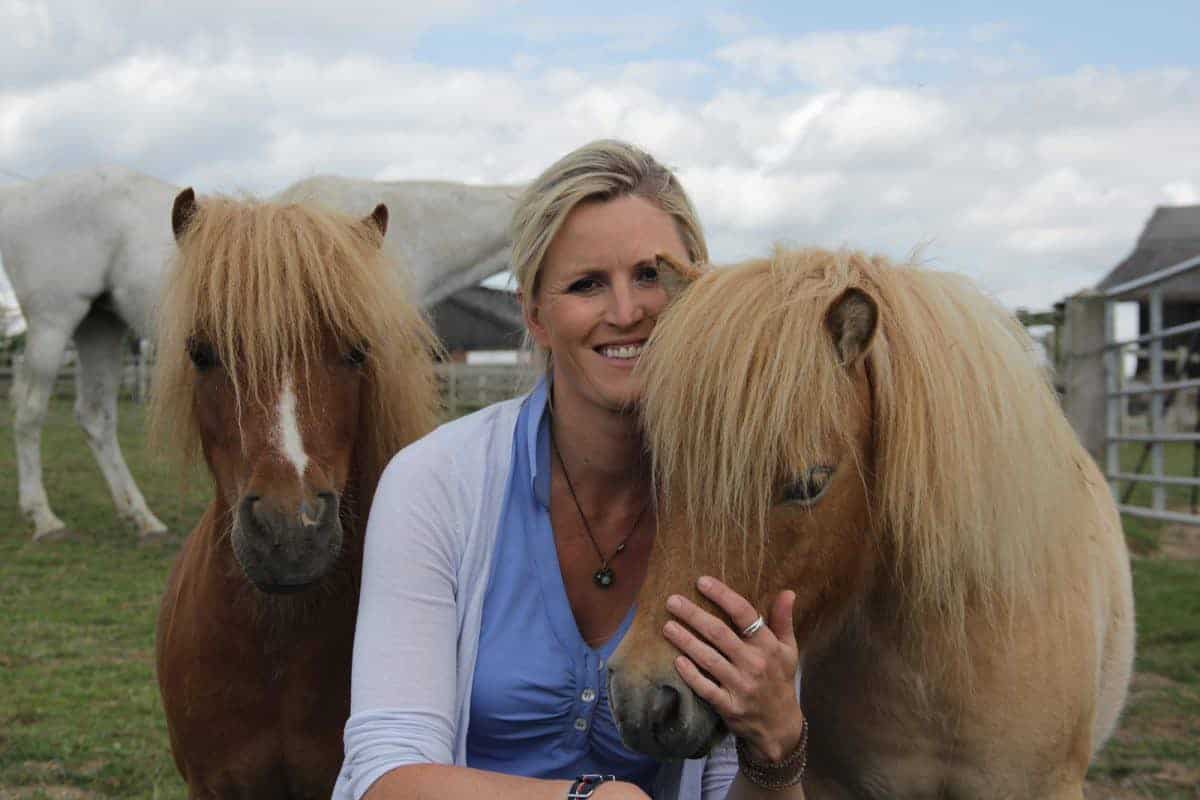My top training exercise: Jenny Rudall

We ask leading riders and trainers to name one of their favourite training exercises. H&C presenter and qualified riding instructor Jenny Rudall shares hers.
Leg yield into canter
“The leg yield is a useful exercise that is probably the easiest of all the lateral movements for your horse to learn and perform. However, my top training tip is using the leg yield to help you obtain the correct canter lead as well as better canter transitions. By leg yielding from the three-quarter line into the corner before you canter, you are putting the weight and balance of the horse into the correct position to strike-off on the correct lead. You will also be using your inside leg to help create bend and prepare the horse for canter.
What horse does it suit?
One of the problems that reoccurs when I meet new clients or horses that need retraining, or especially with ex-racehorses, is bad canter transitions and incorrect canter leads. Some riders always have a problem on one rein and subsequently I often get horses in who have not been trained equally and have problems obtaining the correct lead on one rein. I also get faced with people over-asking for the canter transition and confusing their horse.
Why is it beneficial?
A smooth transition into canter is what everyone is aiming for, no matter what discipline you are riding in. By using this exercise you are not only helping teach the horse gain better balance into canter but improving your timing and increasing your chances of teaching the horse to strike-off on the correct leading leg. The leg yield itself will also help supple your horse and encourage it to bend and work better from behind
How to ride the exercise
First off, I build up the leg yield and just start simply in walk, leg yielding from the three-quarter line back to the track by the corner marker. To leg yield, flex your horse away from the direction of movement and then ask it to step sideways away from the pressure of your leg, while still travelling forward. If your horse isn’t very established in leg yield, just start a metre or two away from the track and ask him to step away from your leg back to the track. The walk should be an active, forward pace and by turning down the three-quarter line of the school you can use the horse’s natural inclination to return back to the side of the arena to help get started.
So after turning down the three-quarter line your inside rein flexes the horse to the inside by pulsing on the rein or opening your hand slightly away from the withers. Do not pull back on the reins or try to pull their head round – not only will the horse resent it, you are likely to cause too much bend in the neck and you’ll never get a good leg yield from there.
Once you have the bend, ask for the sideways motion by using your inside leg a little behind the girth in time with the stride and time your leg aid with the rhythm of the horse’s pace. The outside rein is held against the neck and controls the speed; ask for a half-halt if the horse rushes or if the shoulders are falling out.
Once you reach the corner, do an upward transition to trot. The horse starts to expect to be asked to do something when he reaches the corner, so will be awaiting your aids. If your horse gets keen and offers trot slightly early don’t worry this is a good sign that he is keen to please – just next time half-halt so they don’t anticipate too much.
When it is going well, move up into leg yield in trot into corner and after couple of leg good leg yields, as you reach the corner simply ask for canter. The horse will be listening and ready so don’t over complicate the aids. The moment you get canter praise, praise and praise again. Your inside leg will have done all the prep work in the leg yield so as you hit the track in the corner just sit and put your outside leg back.
Making it harder
Once you have mastered trot to canter try riding a walk to canter the same way. Apply the same principles, walk into the corner in leg yield – sit up tall and ask for canter.
Troubleshooting
Most horses I work with shock their jockeys by pinging right into correct canter. It is normally the second time they try it that it goes wrong, as this time the rider is expecting it to work and over rides it. Keep it simple.
Watch you don’t let the shoulders fall out or the pace get hurried, and ensure the leg yield is active from behind and the horse is not anticipating and just falling out to the track on his own accord.
Remember – clear and simple aids work best.”






